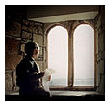The Nest of God
Posted by Anne on Oct 14, 2014 in Naming, Writing | 2 commentsWhat do all the following Scriptural verses have in common?
- ‘Jacob, however, went to Succoth, where he built a place for himself and made shelters for his livestock. That is why the place is called Succoth.’ Genesis 33:17 NIV
- ‘The Israelites journeyed from Rameses to Succoth. There were about six hundred thousand men on foot, besides women and children.’ Exodus 12:37 NIV
- ‘Peter said to Jesus, “Lord, it is good for us to be here. If you wish, I will put up three shelters—one for you, one for Moses and one for Elijah.” Matthew 17:4 NIV
They all mention ‘Succoth’ meaning shelters, tabernacles or booths. As Sukkot, the Jewish Feast of Tabernacles, draws to a close, it’s appropriate to look deeper into the context of each of these events.
- Jacob had only just received his new name, Israel, and passed over the ford of Jabbok. This is his first stopping place, after parting from his brother Esau.
- The Israelites had only just received their new identity as God’s chosen people and celebrated the very first Passover. Succoth was their first stopping place after parting from the Egyptians.
- Simon had only just received his new name, Peter, and gone with Jesus up a high mountain. In asking Jesus about building shelters, he was simply pointing out what God himself had commanded for this day: the building of temporary booths or tabernacles.
The thrice-repeated pattern here is of (1) a new name, (2) passing over a threshold (which in the last case is encoded in the name ‘Cephas’ or ‘Peter’) and (3) stopping to rest and build shelters.
The pattern becomes even more dramatic if we note that Jewish tradition suggests the first sukkah was built by Abraham. It was allegedly constructed for El Shaddai and his angelic escort who stopped by Abraham’s encampment on their way to Sodom. Such a timing indicates it was just days after Abram had become Abraham, another instance of a new name. Moreover God cut a threshold covenant with him, indicating a ‘pass over’ of a cornerstone was involved.
The pattern is still deeper: in at least two instances, there is significant circumstantial evidence to suggest the new names were given on Yom Kippur, the Day of Atonement. The very selection by Jesus of Simon’s new identity, Cephas, is indicative of that date.
Various Hebrew scholars point out that the words surrounding Esau’s return to Seir are like that of the scapegoat being pushed out into the wilderness, just as later happened on the Day of Atonement.
So, Jesus’ decision to spend the Festival of Sukkot atop Mount Hermon is a curious one, as already noted in the last post.
However, maybe there’s even more to the timing here than at first meets the eye. Yom Kippur is six days before the start of Sukkot which is celebrated for seven days. ‘Kippur’ is generally translated atonement, but it could also be covering or even threshold.
Once we note it’s nearly nine months between Yom Kippur and Pentecost, we can see a connection in the natural world. On Yom Kippur, the threshold day, the moment of conception for the church occurred when Jesus spoke it into being with the words, ‘You are Peter and on this rock I will build My church.’
In the natural world, conception doesn’t guarantee birth. It takes about six days for the fertilised egg to travel down the fallopian tubes to the womb. It then takes another week or so for it to nestle safely into the lining.
So the six days between Simon’s renaming and Jesus’ transfiguration parallels the time between conception and implanting. One of the reasons I believe Jesus was transfigured on Mount Hermon is that it was the ‘Mount of Assembly’—where else would He choose to implant His ‘assembly’?
As Sukkot ends, what can Christians learn from this amazing festival? Perhaps more than anything else, that it’s a time to nestle into God. In fact, one translation of sukkah is nest. (Sukkot—also spelled succoth—is the plural of sukkah, the woven shelters made of bough and leaves which the Lord ordered the children of Israel to live in for seven days each year.)
Nestle into God.
What a restful thought.


I really like that idea of nestling into God, Annie.
So do I, Dale. It’s just awesome!